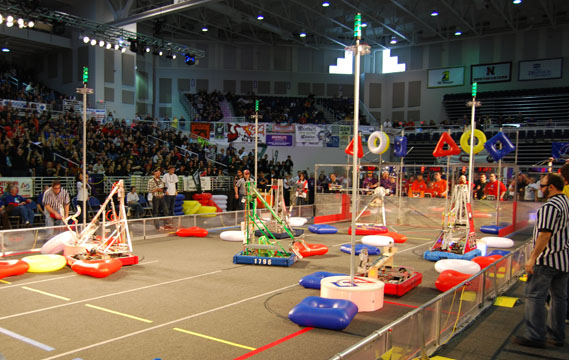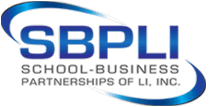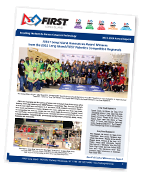Teens From Long Island Area Showcase Design and Engineering Skills at Long Island Regional FIRST Robotics Competition - "Rebound RumbleSM"

High-school students from three states and Long Island- and metropolitan New York-area schools will have the opportunity to showcase their hard work after an intense six weeks of designing and building an original robot in the FIRST (For Inspiration and Recognition of Science and Technology) Robotics Competition (www.usfirst.org). From March 29-31, at Hofstra University’s David S. Mack Sports and Exhibition Complex, 50 teams of students and engineering and technical mentors will demonstrate their skill for science, mathematics, and technology. They will compete for honors and recognition that reward design excellence, competitive play, sportsmanship, and high-impact partnerships between schools, businesses, and communities. Now in its 13th year, the Long Island FRC is presented by School-Business Partnerships of Long Island, Inc. (SBPLI).
Founded by inventor Dean Kamen, who introduced the IBOT Mobility System and the Segway Human Transporter (HT), FIRST was created to inspire an appreciation of science and technology in young people, their schools, and their communities. Now in its 21st season, the FIRST Robotics Competition anticipates close to 2,343 teams from 49 states in the U.S., Australia, Brazil, Canada, Chile, Dominican Republic, Germany, Israel, Mexico, Taiwan, Turkey, and the United Kingdom to compete in 52 regional competitions. More than 1,000 students will compete at the Long Island Regional to earn a spot at the Championship to be held April 25-28 at the Edward Jones Dome in St. Louis, MO.
The 2012 “Rebound Rumble” robotics game is played between two Alliances of three teams each. Each Alliance competes by trying to score as many of the basketballs in the hoops as possible during the two-minute and 15-second match. Balls scored in higher hoops score teams more points. Team Alliances are awarded bonus points if they are balanced on bridges at the end of the match.
“I don’t think any great innovator or technologist got up in the morning trying to do something really big, really innovative, because they wanted a job,” said Dean Kamen, FIRST founder and president of DEKA Research & Development Corporation. “If we create a generation of passionate, smart, well-educated, informed kids willing to take educated risks as they try new things … If we create a passionate generation that understands the power of technology and how to apply it, trust me—they’ll have jobs. That’s a consequence of what they’ll have. If FIRST succeeds, we’ll have a rebirth of a society that believes in a future that can and has to be better than the past. We’re going to make sure we build a 21st century, a future that’s way more exciting than the 20th century.”
“We are extremely excited to see what our participants for the FIRST Robotics Competition have come up with this year,” said Ginny Greco, FRC Director, SBPLI. “This event is an imperative stepping stone for students. For some, it’s a chance to take part in making a vision become a reality. For others, it opens the door to possibilities that are few and far between these days, like scholarships or job opportunities. Most importantly, this competition is a chance to instill within students a vital concept to achieving success; anything is possible if you put your mind to it.”
This season, participating FIRST students are eligible to apply for more than $14 million in scholarships from 130 leading universities and colleges.
Over a six-week timeframe, students work with professional engineering Mentors to design a robot that solves a problem using a Kit of Parts and a standard set of rules. Once these young inventors create the robot, their teams participate in regional competitions that measure the effectiveness of each robot, the power of collaboration, and the determination of students.













 Forms & Downloads
Forms & Downloads Shop FIRST® Long Island
Shop FIRST® Long Island
